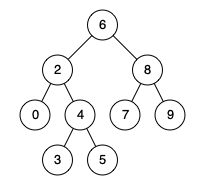Given a string
expression of numbers and operators, return all possible results from computing all the different possible ways to group numbers and operators. You may return the answer in any order.Example 1:
Input: expression = “2-1-1”
Output: [0,2]
Explanation:
((2-1)-1) = 0
(2-(1-1)) = 2
Example 2:
Input: expression = “23-45”
Output: [-34,-14,-10,-10,10]
Explanation:
(2(3-(45))) = -34
((23)-(45)) = -14
((2(3-4))5) = -10
(2((3-4)5)) = -10
(((23)-4)5) = 10
Constraints:
1 <= expression.length <= 20
expression consists of digits and the operator '+', '-', and '*'.* All the integer values in the input expression are in the range
[0, 99].题目大意:
给定一个字符串含数字和加减乘除,求所有加括号方法得到的结果
Catalan解题思路(推荐):
求所有结果,用DFS,由于需要左右递归,双边递归,所以用Catalan法模板
解题步骤:
N/A
注意事项:
- 终止条件返回是一个list
- Python中用eval来计算字符串运算结果返回值为整数,所以归纳左右递归结果要用str转为字符串
Python代码:
1 | def diffWaysToCompute(self, expression: str) -> List[int]: |
算法分析:
时间复杂度Catalan数为O(C[n] += C[i-1]*C[n-i]),空间复杂度O(1)
记忆性搜索算法II解题思路:
大致同上,只不过加入记忆性搜索算法,但优化不算大
Python代码:
1 | def diffWaysToCompute2(self, expression) -> List[int]: |









